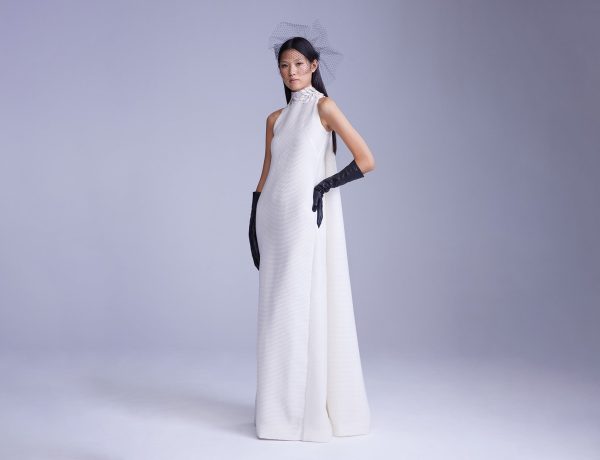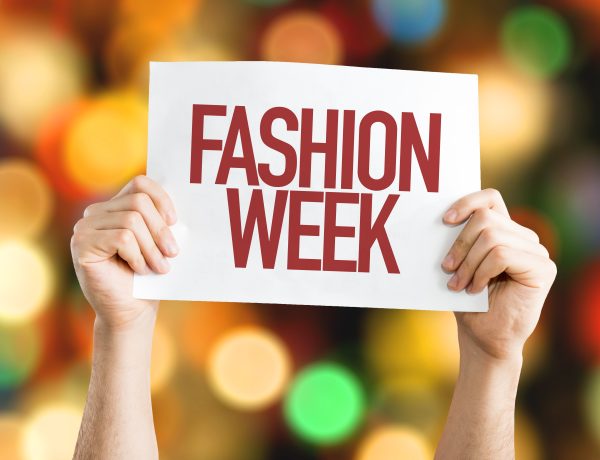Fashion model Lornalitz Baez is breaking barriers in the fashion world and inspiring everyone who has ever been told they “can’t” to love themselves regardless and just say “Eff it!” Here, she gives us a look into her struggles with body image, being mixed race, and her hopes for the fashion industry while chasing a life-long dream.
Cliché: We all choose different paths in life, so for you, why was it modeling?
Lornalitz Baez: I’ve always loved photography and having my photo taken. Ever since I was a little girl, I have pictures of me where I’m posing for the camera. My parents say they remember me running toward the camera and I was never really a shy girl. Then around the age of 12, my mom started putting me in beauty pageants. I was tall for my age; I remember at 5 years old, I looked like I was a second grader. [Laughs] So my mother said, “I need to do something with this.” No one in my family was a model. Everyone in my family is either a teacher, a business owner, or a lawyer. I fell into kind of liking the pageantry; I competed in something small for my first competition and I made top 5. I also remember just always being intrigued by fashion magazines and fashion shows. It was always something that I loved. I would always play dress up in my mother’s shoes and in her makeup, so I just think it was always in me because there was no one in my family that was a model or anything like that. I was the first and the only so far.
Who inspires you? Who do you look at and just go, “Wow”?
I always try to gear toward someone that I found was relatable to me, because I’m mixed—I’m Puerto Rican and 40% Japanese and I have more African American, Indian features. Growing up, it was hard for my agents to put me into a category, so I kind of gravitated toward Tyra Banks. It was like, okay, she’s my complexion, she’s tall, she’s beautiful, and a top model, but she didn’t have my body shape because I was very curvy, so with that, I started to gravitate toward J-Lo. You know, she was the first one with the whole booty, the curves, and she’s Puerto Rican. So I would definitely say it’s between Tyra Banks and Jennifer Lopez.
So with that [feeling as if you don’t fit in a certain category], I know you’ve battled with body image. Did that stem from the fashion industry or was it something that transpired before then?
Oh no, that came from the fashion industry. [Laughs] I didn’t even realize my body was an issue until I got in the fashion industry. In my family, everyone is curvy. Everyone is shaped so differently, but there really isn’t a size zero. My cousins are size 12, 14, and 18, but they’re healthy, voluptuous, tall women. No one has ever told me growing up that I needed to lose weight. It was never family; it was definitely the industry. There wasn’t a “junior plus” when I was growing up. So I had to pick and choose. My agency said I had to either lose weight—I was a size 12 at age 12 and 5’8”—or fall into this video vixen-ish type of work because there really wasn’t a market for plus. So when you’re young and this is a dream of yours, you get manipulated a little bit and that’s what happened to me. I was a young girl and I really didn’t know any better, so I told myself, “Okay, I’ll just lose the weight. How hard can that be?” It turned into me losing the weight, but then it became a struggle to maintain the size in order to continue working, and that’s where the whole eating disorder came in because you start trying different diets, and you start experimenting and talking to other models that are also in the same predicament. So then it became me trying this diet pill, and that diet tea and hearing them say, “Just go to the gym, but go three times a day,” and those are all different forms of eating disorders.

There are many young girls struggling to find their place—not just in the fashion, but in society in general. What advice would you give them having been someone that went through it?
What helped me was just saying “Eff it.” [Laughs] I went through that journey and afterwards, I was able to discover what I wanted and what made me happy. So I tell girls and women of all ages that I got to the point where I was not going to listen to other people anymore and realized I needed to listen to myself and love myself enough to realize that I am enough. I had to remind myself that if they—the fashion industry or people in general—don’t want to accept me, then eff it. I am where I want to be in my life and I do what makes me happy and proud of myself in the end of the day. So my advice is to really internally figure out what is making you feel this way and try to surround yourself with like-minded people, friends, and family that you can really trust, inspirational books and motivational speakers like Les Brown. You have to find yourself. There are so many of us trying to break the barriers in the fashion industry—even myself. I’m trying to break the barrier for the ethnically ambiguous. Not just the black and the white, but the Asian and the Indian and the ones that are mixed like me. The change has been slow, but it’s happening, especially with the first full-figured model on the cover of Sports Illustrated. Now we just need the first full-figured African American, or Asian or mixed model on the cover. I think if that happens, then it opens so many doors for the younger generation to feel more accepted and feel like they have somewhere to fit in.
The Sports Illustrated cover was a huge deal and I think the fashion industry, especially overseas, is taking responsibility in how these models look. I know there are countries that have been putting weight requirements on these girls because they want them to look healthy and have some meat on their bones and I applaud them for that. What do you think about this change?
They don’t talk about it, but it’s because many young models were dying because they were malnourished. That’s the reality of it, and people overseas were complaining and uncomfortable going to these shows and seeing bones on the runway. They made it known that they can’t appreciate the clothing and the fashion when all they’re focused on is the model that looks unhealthy and it’s sad. I think it’s also starting over here, too. I walked in NYFW for the first ever full-figured designer (Ashley Nell Tipton) to win Project Runway and I was her muse. I was the model that was able to close out her show. Also, some designers are letting one or two full-figured models walk with the straight models in shows, so hopefully over time there isn’t a label anymore of straight size or plus size and everyone can just be a “model.”
Tell me about your most fun, most difficult, and most scandalous shoot/modeling jobs you’ve ever done.
The most fun job I’ve done was shooting a Hawaiian Tropics swimsuit spread in Hawaii. I love Hawaii. I just feel I could see myself retiring there.
The craziest shoot was for this magazine and I don’t even remember the name anymore—I think I purposely erased it from my memory. They were trying to do a reshoot of Jesus and the 12 disciples and they tried to throw me into the mix as a temptress, but then they were like, “but we need you topless.” [Laughs] It was the weirdest thing, but this was years ago. [I thought] topless was something you had to be okay with as a model, so I told myself, “Might as well go topless.” That was horrible because the quality of the shoot was terrible. It wasn’t a top photographer, it was just a random shoot, and my mom got to see the pictures and she was not happy about that. [Laughs]
The sexiest one I’ve done—and I’ve done a lot of sexy ones—was a photo shoot in New York City where I wore leopard high waist panties and posed topless. The photographer made me feel really comfortable and the room was filled with cameras because I was filming for an episode of Curvy Girls season 1 on NuvoTV.
What is one of your biggest dreams as a model?
I want to be the first Afro-latina Japanese full-figured Victoria’s Secret model. I want to be an Angel. I would love that. I want to be the face. I want to be with the other models, wings on, walking the runway.
Read more Fashion News on ClicheMag.com
How Lornalitz Baez is Inspiring the Fashion Industry: Photographed by Michael Hermageno



